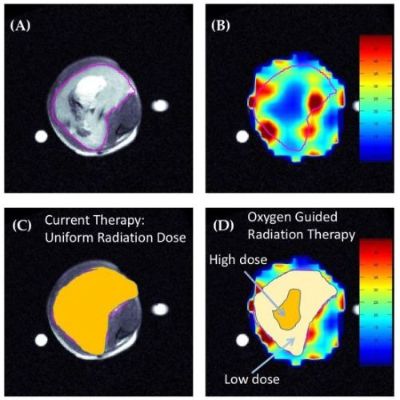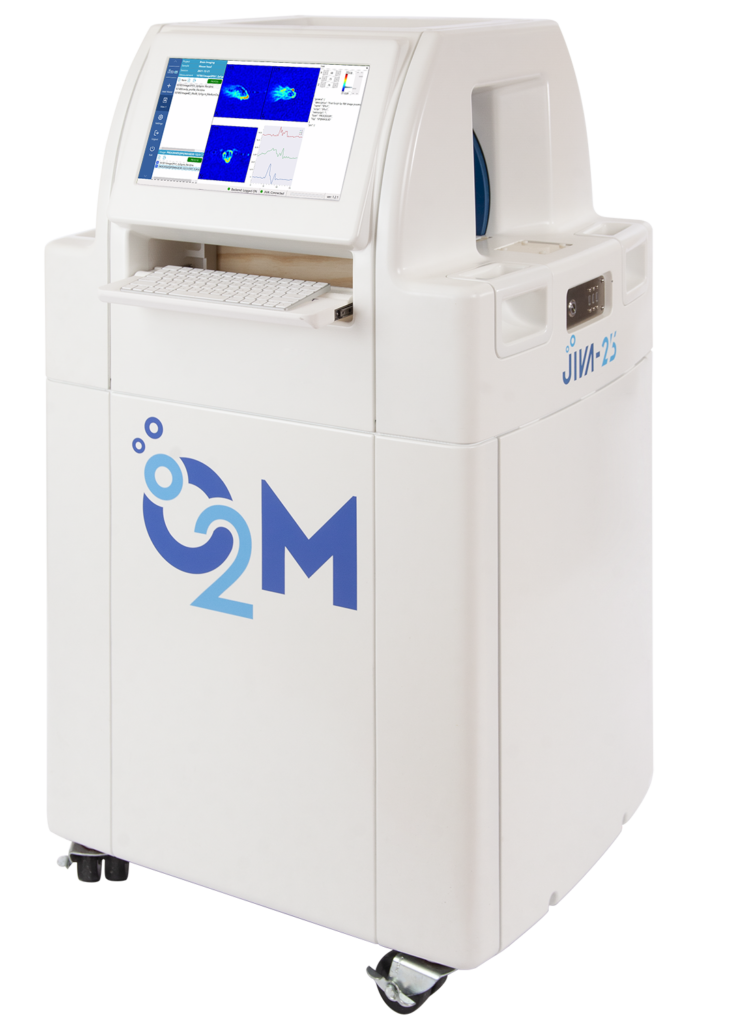
|
Radiation therapy is a dual-edged sword, capable of destroying cancer cells but also indiscriminately damaging the body in the same process. New research aims to reduce a patient's radiation exposure while still retaining therapeutic efficacy. Tumors are notorious for having a disorganized vascular supply and uneven oxygenation. Regions of tumor that can survive in hypoxic environments are more likely to resist radiation therapy. Understanding the distribution of oxygen may be a key piece of knowledge in achieving that goal. Using Oxygen Guided Radiation Therapy (OGRT), overall radiation dose volume can be reduced without compromising tumor cure.
|

JIVA-25™ is a pre-clinical oxygen imager that provides 3-dimensional oxygen maps of tissues. Learn more about the oxygen imaging technology at www.oxygenimaging.com. Recently, this technology was applied in improving tumor control by localizing tumor radiation to the areas of regional hypoxia. Learn more at our O2M webinar.

Moderator: Dr. Paul Grippo, University of Illinois at Chicago
About the Speaker:
Inna Gertsenshteyn is a PhD candidate at the University of Chicago with co-advisors Dr. Howard Halpern and Dr. Chin-Tu Chen. Her dissertation focuses on multi-modal imaging of tumor hypoxia with EPRI, FMISO PET, and DCE-MRI to improve image-guided radiotherapy. She has won first place at two Young Investigator Award sessions for her work, and is a recipient of the F31 National Research Service Award from the NIH. Before graduate school, Inna was a Senior Image Analyst at Invicro, a global research partner to pharmaceutical and biotech organizations to enhance drug discovery and development. She is currently at Biogen as a Co-op in Late Discovery Imaging focusing on drug development for neuromuscular diseases. Inna plans to graduate in late summer of 2022, and is currently exploring post-doctoral and industry positions.
Abstract:
Hypoxia is a major source of tumor resistance to radiation. Previous studies in the Halpern Lab at the University of Chicago using low-frequency pulsed electron paramagnetic resonance imaging (LF-EPRI) showed significantly improved local tumor control when directing a radiation boost to hypoxic tumor subregions. Those studies were completed in two preclinical tumor types: FSa fibrosarcomas and MCa-4 mammary adenocarcinomas. The presented study was repeated in SCC7 squamous cell carcinomas using both the LF-EPRI system and the higher-frequency JIVA-25™ system from O2M Technologies. Here we will show improved results using the JIVA-25™ for oxygen-guided radiation therapy. We will also compare hypoxia imaging between pO2 EPRI and 18F-Fluoromisonidazole positron emission tomography (FMISO PET), a more clinically-relevant imaging modality, to review how EPRI can help inform the accuracy of PET hypoxia radiotracers with a hybrid PET/EPR imaging system.
